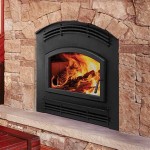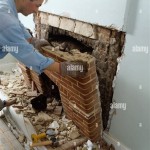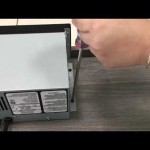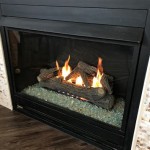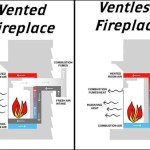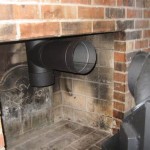Can You Mount a TV Into a Brick Fireplace Wall? A Comprehensive Guide
Mounting a television above a fireplace has become a popular interior design trend. This configuration optimizes space, combines entertainment with a focal point, and potentially enhances the viewing experience. However, when considering a brick fireplace wall, several factors must be assessed to determine feasibility and ensure a safe and aesthetically pleasing installation. This article will explore the key considerations, challenges, and methods involved in mounting a TV onto a brick fireplace wall.
Brick, by its nature, presents unique challenges compared to drywall or wood-framed walls. Its inherent hardness, potential for crumbling, and the presence of mortar joints require specialized tools and techniques. Ignoring these factors can lead to unstable mounting, damage to the brick, and potential hazards associated with a falling television.
Furthermore, the heat generated by a functioning fireplace can impact the television’s performance and lifespan. Extreme heat can damage the electronic components, resulting in picture distortion, overheating, and premature failure. Therefore, understanding the heat dynamics and implementing mitigation strategies are crucial for a successful installation.
Assessing the Suitability of Your Brick Fireplace
Before initiating any drilling or mounting, a thorough assessment of the brick fireplace is critical. This assessment involves evaluating the brick type, mortar condition, location, and overall structural integrity.
The type of brick used in the fireplace construction directly influences the ease and effectiveness of drilling and anchoring. Soft, porous bricks are more prone to crumbling and may not provide a secure hold for the mounting hardware. Harder, denser bricks offer better stability but require more robust drilling equipment. Identifying the brick type will inform the selection of appropriate drill bits and anchors.
The condition of the mortar is equally important. Deteriorated or crumbling mortar joints weaken the overall structure and compromise the anchor points. Repairing any damaged mortar before mounting is essential to ensure a solid and stable installation. This may involve tuckpointing, a process of removing and replacing damaged mortar.
The location of the mounting point relative to the fireplace opening significantly affects the heat exposure to the television. Mounting the TV too close to the firebox increases the risk of heat damage. Consider the height of the mantel, the depth of the fireplace recess, and the potential for heat deflection. Ideally, the mounting point should be as high as possible above the firebox and shielded by a substantial mantel.
Finally, the structural integrity of the fireplace wall should be verified. Cracks, bulges, or other signs of instability indicate underlying structural problems that must be addressed before attempting to mount a television. Consulting with a qualified structural engineer or experienced mason is recommended in such cases.
Selecting the Appropriate Mounting Hardware and Tools
Choosing the correct mounting hardware and tools is paramount for a secure and lasting installation. Using inadequate or inappropriate materials can lead to instability, damage, and potential hazards.
For brick walls, specialized masonry anchors are essential. These anchors are designed to grip the brick securely and withstand the weight of the television. Types of masonry anchors include sleeve anchors, wedge anchors, and tapcon screws. Sleeve anchors provide a strong hold and are relatively easy to install. Wedge anchors offer exceptional holding power but require precise drilling. Tapcon screws are self-tapping screws specifically designed for concrete and brick. The choice of anchor depends on the brick type, the weight of the television, and the desired level of security. Consult the manufacturer's specifications to determine the appropriate anchor size and load capacity.
A high-quality hammer drill is indispensable for drilling into brick. A standard drill will struggle to penetrate the dense material and may damage the drill bit. A hammer drill combines rotary motion with a percussive action, effectively pulverizing the brick and allowing for easier drilling. Use a masonry drill bit specifically designed for drilling into brick and concrete. These bits are typically made of tungsten carbide, a hard and durable material that can withstand the abrasive nature of brick.
Other essential tools include a level, stud finder (to identify any underlying framing behind the brick), measuring tape, pencil, safety glasses, dust mask, hammer, and wrench or socket set for tightening the anchors. Safety glasses and a dust mask are crucial for protecting your eyes and lungs from brick dust generated during drilling.
Furthermore, consider a television mount that offers adjustability. A tilting mount allows you to adjust the viewing angle to reduce glare and improve visibility. A full-motion mount provides even greater flexibility, allowing you to swivel and extend the television for optimal viewing from different positions in the room.
Addressing Heat Concerns and Mitigation Strategies
The heat generated by a functioning fireplace poses a significant threat to the longevity and performance of a television mounted above it. Excessive heat can damage the electronic components, leading to premature failure and potentially hazardous conditions. Implementing effective heat mitigation strategies is therefore crucial.
The most effective way to mitigate heat is to create a physical barrier between the fireplace opening and the television. A substantial mantel serves as a heat shield, deflecting rising heat away from the television. The deeper and wider the mantel, the more effective it will be at protecting the television. Consider extending the mantel beyond the sides of the fireplace opening to provide additional protection.
Measuring the temperature above the fireplace while a fire is burning is essential to determine the actual heat exposure to the television. Use a thermometer to monitor the temperature at the intended mounting point. If the temperature exceeds the television manufacturer's recommended operating range, further mitigation strategies are necessary.
Installing a heat-deflecting shield behind the television can further reduce heat exposure. These shields are typically made of metal or other heat-resistant materials and are designed to reflect heat away from the television. Ensure the shield is properly ventilated to prevent heat buildup behind the television.
Using an electric fireplace insert instead of a traditional wood-burning fireplace eliminates the risk of excessive heat exposure. Electric fireplaces generate heat through electrical resistance, which is typically much lower than the heat produced by a wood-burning fire. Furthermore, electric fireplaces often have adjustable heat settings, allowing you to control the amount of heat generated.
Convection is the primary method of heat transfer in this scenario; therefore, promoting airflow behind the television can help dissipate heat. Consider using a television mount that allows for ample space behind the screen for ventilation. Avoid blocking any ventilation openings on the television itself.
Consider mounting the television to the side of the fireplace instead of above it. This eliminates the heat issue altogether and can still provide a visually appealing and functional setup. This solution involves running cables behind the wall, which may require professional assistance.
Regularly monitor the television's performance for any signs of overheating. Check for picture distortion, unusual noises, or frequent shutdowns. If any of these symptoms occur, immediately turn off the television and investigate the cause. It may be necessary to implement additional heat mitigation strategies or relocate the television.
Alternatively, consider a recessed installation. Recessing the TV into the wall to the side of the fireplace provides a clean, modern look while completely avoiding the heat issue. This requires more extensive construction, including framing and drywall work, but offers a permanent and aesthetically pleasing solution. Cable management is often simplified in this setup as well.
Finally, professional consultation is recommended. A qualified installer can assess the specific conditions of your fireplace, advise on the best mounting options, and implement appropriate heat mitigation strategies. A professional installation ensures safety, stability, and optimal performance of your television.

Mounting A Tv On Brick Fireplace Step By Guide

How To Mount A Tv On Brick Fireplace 7 Straightforward Steps

Can I Mount My Tv Above The Fireplace

How To Safely Mount A Tv Above The Fireplace On Brick Wall

Don T Mount Your Tv Above Fireplace Here S Why Cnet

Can I Mount My Tv Above The Fireplace

How To Mount A Tv Over Brick Fireplace And Hide The Wires Designing Vibes Interior Design Diy Lifestyle

How To Mount A Tv On Brick Fireplace 7 Straightforward Steps

How To Mount A Tv In Brick Wall With The Help Of Professionals

Mounting A Tv On Brick Above Fireplace House Of Hepworths
Related Posts

